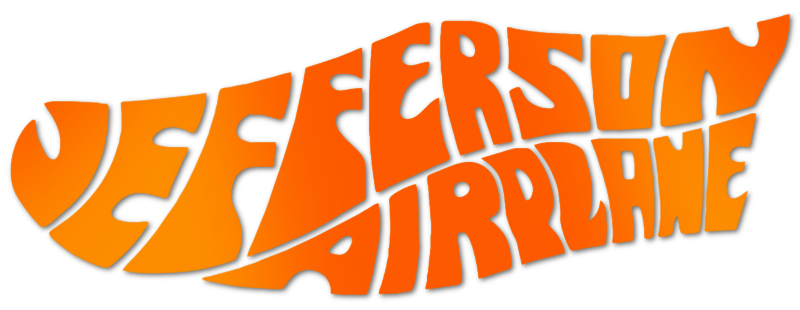
What’s to like?
“Fly Jefferson Airplane, gets you there on time…”
A brief overview of this unusual and influential band that grew out of San Francisco’s psychedelic scene in the late sixties, taking you through their six classic albums and suggesting tracks which newcomers might enjoy trying out.
The low down
Over the last couple of years I’ve been drifting back to the late sixties, and listening to the likes of Jimi Hendrix, Janis Joplin, and the Grateful Dead, so I guess it was inevitable that I’d cross paths with Jefferson Airplane at some point. There’s something vibrant and optimistic about that period of rock in America, and for me there’s the added excitement of hearing some of this music for the first time.
Finding the Airplane’s classic albums isn’t a problem – they’re still widely available in store – but which one should you go for first? Does it help to follow them chronologically? Or are there any moments that you should avoid?
Well, having pretty much played all six albums continuously and randomly over the last few weeks, here are a few thoughts to guide you.
Oh, and in case you were wondering, the band’s name was derived from a nickname (“Blind Thomas Jefferson Airplane”) given to their guitarist Jorma Kaukonen, because he was inspired by bluesman Blind Lemon Jefferson.
Jefferson Airplane Takes Off (1966)
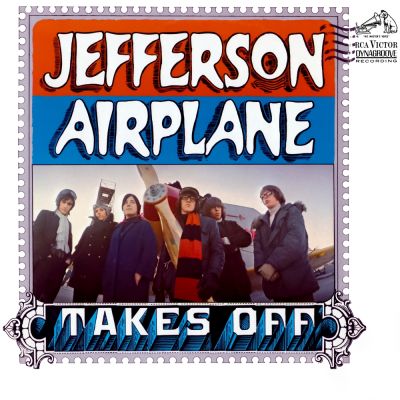
The band’s first album is a surprisingly solid affair, with nearly all of the songs written by the band. Something of a rare occurrence in those days, when many debut albums relied on cover versions of other artists’ songs. The sound is typical of that period, with jangly guitars and strident choruses, and the drums low in the mix.
However, the one thing that does stand out is the bass guitar. Normally I’d expect it to be as muted as the drums, but here Jack Casady really pushes it to the forefront – check out his descending run on “Let Me In” – in a style that would later be adopted by the likes of Chris Squire (Yes).
The other notable thing about this album, is the presence of singer Signe Anderson. This was her only album with the band, but it gives the dual vocals with lead singer Marty Balin a different feel to the later albums, complementing his voice rather than contrasting with it.
Standout tracks to sample: “It’s No Secret”, “Come Up The Years”, and an alternative take of “And I Like It” included among several bonus tracks on the current cd edition. Arguably, this longer, bluesier version should have been the take used on the album as it’s one of Balin’s finest vocal performances.
Surrealistic Pillow (1967)
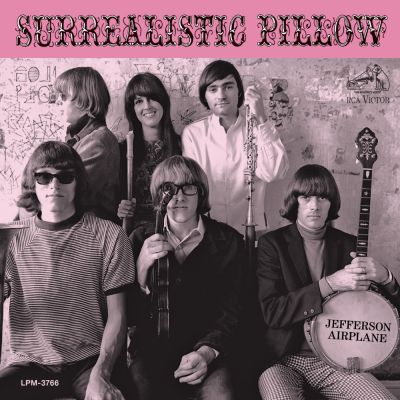
The album that many believe to be the band’s finest, as the music evolved from the folk rock of the debut into the prevalent psychedelic sounds of ’67. If you think that this was the year of Sgt Pepper, The Doors’ debut, and Hendrix’s Are You Experienced, Surrealistic Pillow does well to rank alongside these other classic albums.
From the opening of “She Has Funny Cars” there’s a lighter, almost poppier feel to the music, and the Beatles influence is obvious on the likes of “My Best Friend”.
However, as soon as “Somebody To Love” kicks off, it quickly becomes apparent that the Airplane have a new crew member on board, and the ride is about to get bumpier. Not content to be a back seat passenger, singer Grace Slick quickly stamps her identity on the band’s sound with her powerful voice and an outstanding song.
By way of comparison, check out the two versions of “Go To Her” (included as bonus tracks on this cd and the debut), and you’ll quickly see the marked difference in singing between Slick and her predecessor.
It also marks a gradual shift in the axis of influence over the coming years, as Slick would become more dominant in the song writing, with Balin being edged out. Still, at least for this album, they make a fine duo, playing off one another’s voices, in a form of counterpoint that would give the band its unique sound.
All of the players step up a notch for this album, with the guitar arrangements and playing between Paul Kantner and Jorma Kaukonen becoming more accomplished, and going for maximum impact with fewer notes. And new drummer Spencer Dryden brings an added dimension to the music with intricate and subtle drum patterns weaving in and around the songs.
Standout tracks to sample: “White Rabbit”, with its marching tempo and staccato singing setting it apart from the other singles of the day, “3/5 of a Mile in 10 Seconds” which is a terrific rocker and a natural for opening the band’s live shows, and the beautiful ballad “Come Back To Me”.
After Bathing At Baxter’s (1967)
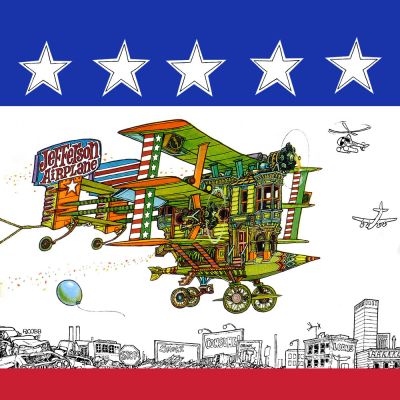
The difficult one. This is the band at their most experimental, with much of the material being improvised, and at times disappearing down a one-way street. The album starts off well enough with the catchy “The Ballad Of You & Me & Pooneil”, but then quickly threatens to derail the listener with pointless interludes such as “A Small Package of Value Will Come to You, Shortly”. Think of The Beatles’ “Revolution 9” and you’ll see where I’m coming from.
Fortunately the album as a whole is still enjoyable, but its freewheeling nature makes it a challenge for the first time listener. Even a comparatively straight forward ballad such as “Young Girl Sunday Blues” suffers, as the mix is suddenly folded down from stereo to mono midway through, for no apparent reason. However, all is not lost. The nine minute “Spare Chaynge” offers an insight into the band’s live persona, as they feel their way through the music in the same way as the Grateful Dead, more often hitting the mark than missing it.
Standout tracks to sample: the album closer “Won’t You Try / Saturday Afternoon”, which turns out to be one of the best things the band ever wrote.
Crown Of Creation (1968)
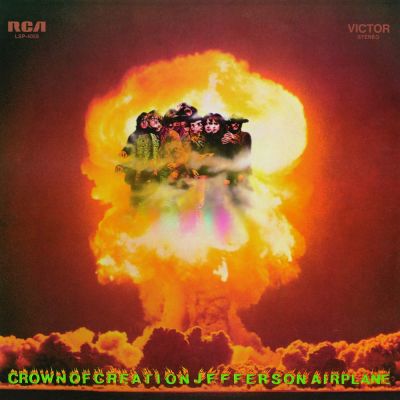
By contrast, this album is one of the band’s most accessible, with a rich, warm sound mix, and a tighter focus on songs.
Of course, it wouldn’t be the Airplane if they didn’t try to buck the trend, so the album opens not with one of their upbeat numbers, but rather with “Lather”, a creepy tale about a boy trying to remain as young as possible until one day he is forced to grow up and becomes shattered by the experience. No surprise that this one is sung by Slick, but in a gentle, seductive way that only makes the lyrics feel creepier.
Slick also scores with “Triad”, a song originally written by David Crosby about a man in love with two women and wanting both. Slick then turns the concept on its head and swaps genders so that it’s the woman in control and with two men vying for her affections. And yet this isn’t a protest song championing women’s rights. It’s tenderly sung and there’s a genuine empathy for all three people in this relationship.
Elsewhere, Kantner was coming up with the goods on songs such as the title track and “The House At Pooneil Corners”, both influenced by his interest in science fiction. The latter track taps into then contemporary fears of nuclear apocalypse, with an appropriately heavy guitar soundtrack and feedback effects imitating air raid sirens. (Interestingly, the song opens with the same distorted feedback effect that closes the earlier Pooneil song on the Baxter’s album.)
Standout tracks to sample: “Crown Of Creation”, “Triad” and “The House At Pooneil Corners.”
Bless Its Pointed Little Head (1968)
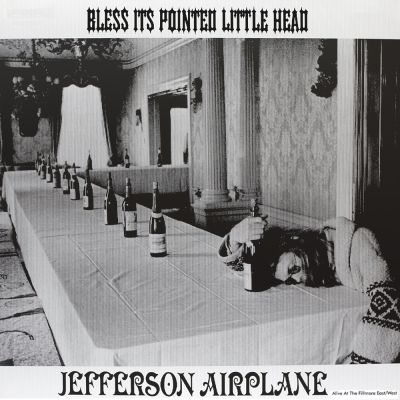
The live album, and an absolute belter. The band had already garnered a reputation as one of the hottest tickets on the live circuit, and this compilation of performances recorded at the Fillmores (San Francisco and New York) is the proof.
As soon as you hear the opening drumbeats and the guitars tuning in, you can tell that once the band are on stage they dial the intensity up to eleven. The drums kick harder, the guitars pummel and wail, the bass thunders along and the singers take no prisoners, as they exhort and snarl their way through the lyrics, darting and coiling around each other’s moments on the microphone.
Familiar songs such as “Plastic Fantastic Lover” and “It’s No Secret” shrug off their pop sheen and emerge as stripped down rockers, and it’s fun hearing Balin transform from the gentle balladeer of the studio into a full-throated frontman. As you can imagine, Slick also rises to the challenge, and there’s a sense of competitiveness between the two singers which adds to the drama.
However, for me the most interesting moment are where the band slow down and stretch out on tracks like “Fat Angel” and the eleven minute “Bear Melt”, savouring the moments and going where the muse takes them. The latter track in particular is quite the improvised ride as Slick steps up to the microphone and uses her voice as an instrument, playing off the guitars, and taking on an ethereal air. It may have been Balin and Kantner’s band, but it’s Slick that gives the Airplane its unique sound on stage.
Standout tracks to sample: “Bear Melt”, “Fat Angel”, and “3/5 of a Mile in 10 Seconds”.
Volunteers (1969)
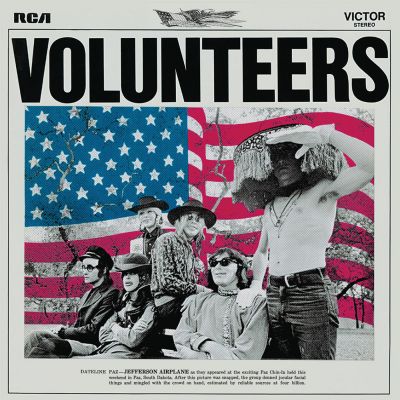
The last album to be recorded by this line-up of the band, and in some ways a fitting epilogue. The band arose from the optimism of the mid-sixties, but Volunteers reflects the disillusionment that the same generation was now beginning to feel with the world at large as the summer of love drew to a close.
“One generation got old, one generation got sold, this generation got no destination to hold.”
It’s not a protest album per se, but the several of the songs are influenced by environmental and political issues of the day. Songs like “We Can Be Together” and the title track reflect frustration at authorities thwarting the desire for social change, while “Eskimo Blue Day” and “Wooden Ships” echo the despair at man’s destruction of the environment.
“Wooden Ships” is a particularly interesting song, with the music having been written by David Crosby who then passed it on to Kantner to come up with lyrics. I was already familiar with the version recorded by Crosby, Still & Nash, but the Airplane’s version is more effective in portraying the imagery of a trashed world. They play the song at a slower, doomier tempo, and the smooth harmony vocals of CSN are replaced by the strident voices of Slick and Balin. It’s a stark arrangement well suited to the grim nature of the story being told.
Volunteers is also the sound of a band starting to pull apart at the seams, drifting between to so-called protest songs and easy-going country rock, with its original lead singer withdrawing from the scene – Balin only gets a credit for the title track, with Kantner, Slick and Kaukonen taking the lion’s share of song-writing credits. The band would struggle on after Balin’s departure, but this felt like a logical point for me to step off.
Standout tracks to sample: “Wooden Ships”, “We Can Be Together” and “Eskimo Blue Day.”
Beyond the core albums, I haven’t come across much in the way of additional rare material, although each of the cds currently available come with a handful of alternative takes or songs which didn’t make the final cut, which can be fun to listen to once you’ve become familiar with the main albums. However, one set which did cross my path was a boxed collection titled Ignition.

On first glance, there doesn’t look like much on offer, as the box only contains the first four albums, but if you did a little deeper, Takes Off and Surrealistic Pillow both come with the original mono mixes, which don’t seem to be available anywhere else on cd. Some listeners will prefer the mono mixes as they don’t have the excessive reverb echo that make the stereo mixes sound a little cavernous and booming. On the other hand, the stereo mixes offer up more detail as they split the three guitarists across the speakers and you can more easily pick out each player’s parts. Each mix has its pros and cons, but as a fan, I always find it fascinating to compare the different formats.
Compared to other bands from the era, Jefferson Airplane’s recorded output may feel a little limited, but that works to the advantage of the newcomer, as the cds are relatively available and affordable and a collection can quickly be built up to over a good overview of the band’s legacy.
They may not have made waves in the UK, in the way that contemporaries like The Doors and Hendrix did, but in the US they were a big deal. A quick look at the bill of payments made to bands that performed at Woodstock shows that the Airplane were in the top seven of the highest paid performers. Not bad going, considering the competition at the time.
“Fly Jefferson Airplane, gets you there on time…Captain High at your service.”

Pingback: A to Z links to reviews | Moments in Transition·
Pingback: Paul Kantner – Blows Against The Empire (1970) (***) | Moments in Transition·